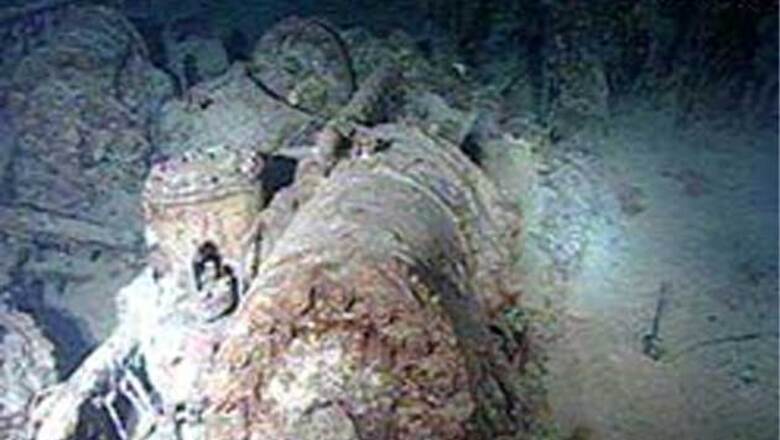
views
Toronto: A newly discovered rust-eating bacteria is munching away the wreckage of the Titanic and the remains of the ship may soon be lost, a team of scientists that included an Indian has warned.
Researchers at Dalhousie University in Halifax, Nova Scotia in Canada, have been examining the bacteria eating away the remains of the famous ship as it sits on the Atlantic Ocean floor.
Using DNA technology, Dalhousie scientists Henrietta Mann and Bhavleen Kaur and researchers from the University of Sevilla in Spain were able to identify a new bacterial species collected from rusticles - a formation of rust similar to an icicle or stalactite - from the Titanic wreck.
The iron-oxide-munching bacterium has fittingly been named Halomonas titanicae, MSNBC reported.
Titanic was the largest passenger steamship in the world when it set off on its maiden voyage from Southampton, England to New York City on April 10, 1912.
The bacteria has critical implications for preservation of the ship's wreckage.
"In 1995, I was predicting that Titanic had another 30 years," Mann said. "But I think it's deteriorating much faster than that now. Perhaps if we get another 15 to 20 years out of it, we're doing good... eventually there will be nothing left but a rust stain."
The wreck is covered with rusticles; the knob-like mounds have formed from at least 27 strains of bacteria, including Halomonas titanicae.
"It's a natural process, recycling the iron and returning it to nature," Mann said.
For decades, following the ship's sinking in 1912, the Titanic's final resting spot remained a mystery.
Discovered by a joint American-French expedition in 1985, the wreck is located a little more than 3.8 kilometers below the ocean surface and some 329 miles southeast of Newfoundland, Canada.
In the 25 years since the discovery of the wreck, the Titanic has rapidly deteriorated.
While the disintegration of the Titanic makes preservation of the ship impossible, the bacteria doing the damage may be useful in accelerating the disposal of other old ships and oil rigs.
Further, it could also help scientists develop paints or protective coatings to guard against the bacteria for working vessels.
The researchers' findings will be published on Wednesday in the International Journal of Systematic and Evolutionary Microbiology.
















Comments
0 comment